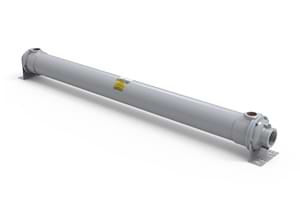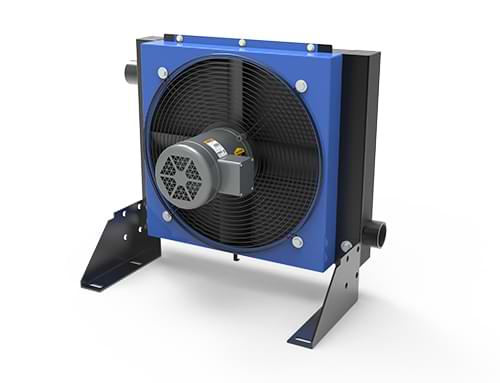Aftercoolers for Painting and Spraying
Compressied air gets hot, and hot air carries more moisture. That’s a problem when you’re painting because moisture can mess up the finish, leaving you with bubbles or uneven coats. An aftercooler steps in to drop the temperature, pulling out that excess water vapor before it hits the spray gun. The result? Cleaner, drier air that helps the paint go on smooth and stick where it’s supposed to. For pros working long shifts, it’s also about efficiency—less heat stress on the equipment means fewer hiccups.
Applications
- Automotive Spraying: In a body shop, a turbocharged compressor with an aftercooler keeps the air steady for spraying a flawless clear coat on a car. Think of a shop in Detroit prepping a custom Ford Mustang—moisture’s the enemy, and the aftercooler’s the shield.
- Industrial Coating: Big jobs, like painting steel beams for a warehouse, rely on high-volume sprayers. An aftercooler ensures the compressor doesn’t choke under the load, keeping the finish consistent across hundreds of feet.
- Aerospace Finishing: High-stakes jobs—like coating a Boeing wing—demand perfection. Aftercoolers help deliver the ultra-clean air needed for those aerospace-grade finishes.
- Furniture Finishing: A workshop staining oak cabinets needs dry air to prevent the finish from clouding. The aftercooler keeps it crisp.
- Powder Coating: For metal parts, like bike frames, aftercoolers ensure the air’s cool and clean so the powder sticks evenly before baking.
- Sign Painting: Large outdoor signs demand precision—aftercoolers keep the sprayer steady for sharp lines.
Water Cooled Aftercoolers
Compressor Cooling
- Fixed or Removable Tube Bundles
- Material Options Available
- Standard and Custom Options

Air Cooled Aftercoolers
Compressor Cooling
- Use Ambient Air to Cool
- Variety of Motor Options
- Standard Pressures of Up To 250 psi

The Benefits of Aftercoolers for Painting and Spraying Applications
Aftercoolers allow operators to adapt to different environments. Painting and spraying gigs can happen anywhere—humid coastal shops, dusty inland warehouses, or even chilly northern garages. Aftercoolers keep the air in check no matter the conditions. In a humid spot like Florida, for instance, a painter doing boat hulls relies on the aftercooler to strip out moisture that’d otherwise ruin the epoxy coating. Up in Minnesota, where winter jobs mean cold starts, it helps the compressor warm up without bogging down.
Take a small auto shop in Ohio, for example. They’re using a compressor with an aftercooler to paint a fleet of delivery vans. Without it, they’d be fighting condensation in the lines, especially on muggy days, and the paint would look patchy. Or picture a factory in Texas spraying protective coatings on oilfield equipment—the aftercooler keeps the compressor from overheating during marathon runs, saving time and rework.
Energy savings are a bonus too. By cooling the air early, aftercoolers lighten the load on downstream dryers, cutting power costs. For a busy shop, that’s real money back in the pocket. In this industry, where margins can be tight and clients expect perfection, aftercoolers are a practical edge—keeping the work smooth and the equipment happy.


